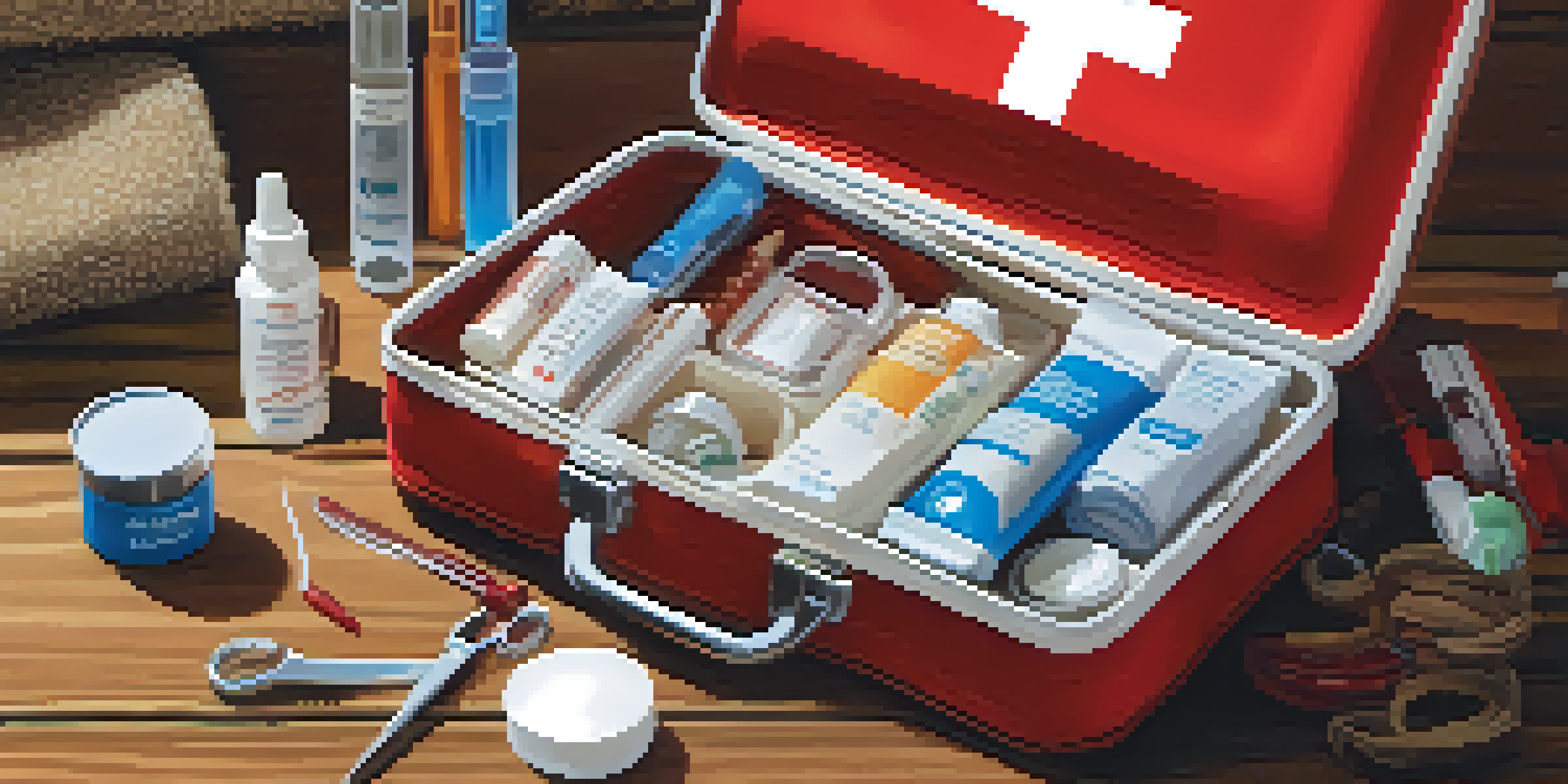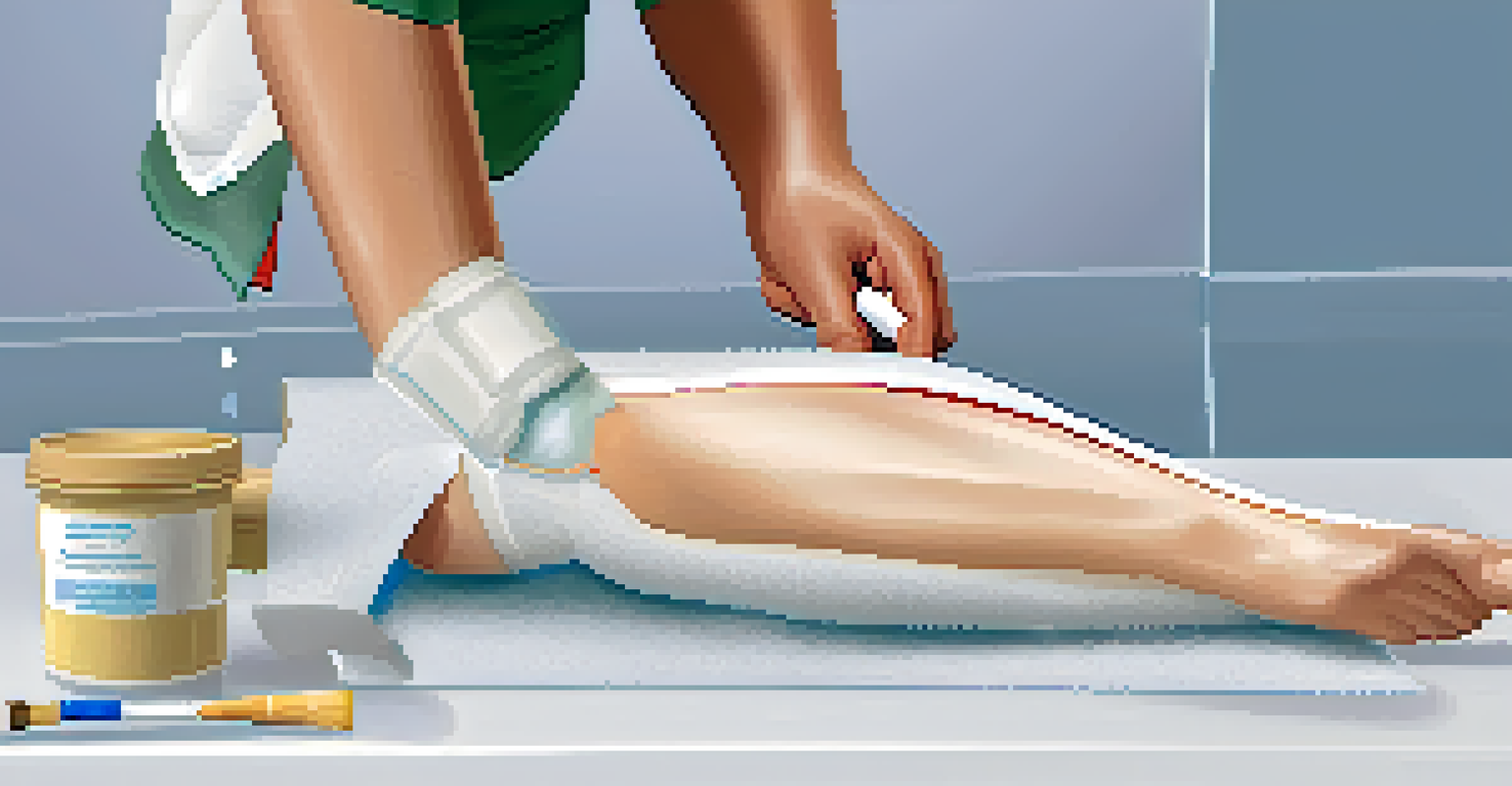Top 10 First Aid Skills Every Self Defense Practitioner Needs

Understanding Basic First Aid Principles
Before diving into specific skills, it’s crucial to grasp the basics of first aid. Understanding how to assess a situation, prioritize help, and communicate effectively can save lives. Think of it as the foundation upon which all other skills are built.
The greatest gift of human beings is that we have the power of empathy.
For instance, learning the ABCs—Airway, Breathing, and Circulation—provides a simple, yet effective guideline for tackling emergencies. This foundational knowledge will empower you to act swiftly and confidently during a crisis.
As a self-defense practitioner, having this foundational knowledge allows you not only to protect yourself but also to offer aid to others in distress. Remember, the aim is to ensure safety and stability until professional help arrives.
Recognizing and Managing Shock
Shock is a critical condition that can occur after a traumatic event. Recognizing the signs—such as rapid heartbeat, pale skin, or confusion—can help you act quickly. In self-defense situations, managing shock is as important as addressing physical injuries.

To manage shock, lay the person down, keep them warm, and elevate their legs if possible. This helps improve blood flow to vital organs and can be life-saving. Think of it as giving the body a little reset.
Essential First Aid Skills
Grasping basic first aid principles is crucial for effectively assisting others in emergencies.
As self-defense practitioners, understanding shock equips you to calm and care for someone who may be overwhelmed by an injury or incident. Your ability to stabilize them can make a significant difference in their recovery.
Performing CPR Effectively
Cardiopulmonary resuscitation (CPR) is a vital skill that can revive someone who has stopped breathing or whose heart has ceased beating. Learning the rhythm and technique can make you a life-saver in emergencies. It’s like giving someone a second chance at life.
In emergencies, the first step is to stay calm and assess the situation.
CPR involves chest compressions and rescue breaths, and knowing when to use each technique is essential. In self-defense scenarios, you may encounter situations where someone is injured and requires immediate assistance, making this skill crucial.
Practicing CPR regularly ensures you’re prepared when the moment arises. Remember, every second counts, and having this skill can turn a potentially tragic outcome into a hopeful recovery.
Controlling Bleeding with Pressure
Injuries often lead to bleeding, and knowing how to control it is essential. Applying direct pressure to a wound can significantly reduce blood loss and prevent shock. Imagine it as a way of ‘plugging’ a leak until more help arrives.
Use clean cloths or bandages to apply firm pressure on the wound. If blood soaks through, don’t lift the cloth; instead, add more layers on top. This technique is not just effective—it's simple and can be done by anyone.
Managing Shock and Injuries
Recognizing and managing shock alongside physical injuries can significantly impact recovery in crisis situations.
As a self-defense practitioner, being able to manage bleeding can be crucial for both yourself and others during an unexpected altercation. Your quick action can help stabilize a situation while waiting for medical help.
Treating Burns with Care
Burns can happen in various scenarios, including self-defense situations, making it important to know how to treat them. The first step is cooling the burn under running water for at least 10 minutes. This helps to reduce damage and pain.
Avoid using ice or applying creams, as these can worsen the injury. Instead, cover the burn with a clean, non-stick dressing to protect it. Think of this as giving the skin a protective layer to help it heal.
Being equipped to treat burns ensures that you can provide immediate care to yourself or others, minimizing long-term damage. In self-defense, the ability to handle such injuries can make a significant difference in recovery.
Recognizing and Responding to Choking
Choking is a scary situation that can happen unexpectedly, especially during physical altercations. Recognizing the signs—like inability to speak or clutching the throat—can help you take immediate action. It’s a critical skill that can turn panic into resolution.
The Heimlich maneuver is a widely recognized technique to help dislodge an object blocking the airway. By applying upward thrusts just above the navel, you can create enough pressure to expel the obstruction. Remember, practice makes perfect!
Preventing Infection After Injuries
Proper wound care and infection prevention are vital for ensuring safe recovery after any injury.
As a self-defense practitioner, knowing how to assist someone who is choking not only showcases your skills but also underscores your commitment to safety. Your ability to act quickly can save a life in moments of distress.
Identifying and Treating Sprains and Strains
Sprains and strains can occur during physical confrontations or training sessions. Recognizing the symptoms—swelling, pain, or limited movement—can help you respond appropriately. Think of them as injuries that require a bit of TLC to heal.
The RICE method—Rest, Ice, Compression, Elevation—is a simple and effective approach to treating these injuries. By applying ice and compression, you can minimize swelling and speed up recovery. It’s all about providing support to the injured area.

Being adept at treating sprains and strains means you’ll be better prepared to handle injuries that could occur in self-defense situations. Your ability to care for these injuries can prevent further complications and promote healing.
Understanding and Preventing Infection
Injuries can lead to infections if not properly cared for. Understanding how to clean and dress wounds is crucial in preventing complications. It’s like taking a proactive step in ensuring your body can heal without additional challenges.
Always clean the wound with soap and water, and apply an antibiotic ointment before covering it. This simple routine can significantly reduce the risk of infection. Think of it as creating a protective barrier for your skin.
As a self-defense practitioner, knowing how to prevent infection reinforces your role in safeguarding your own health and that of others. Your knowledge can make a substantial difference in recovery and overall well-being.